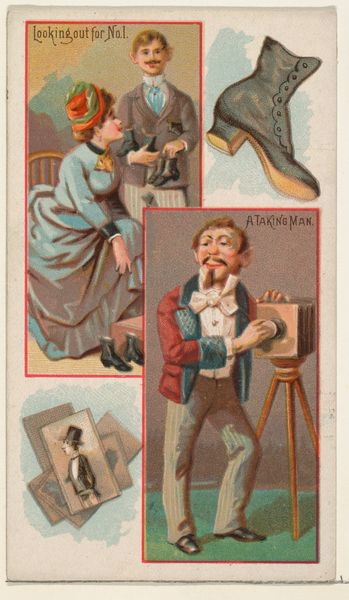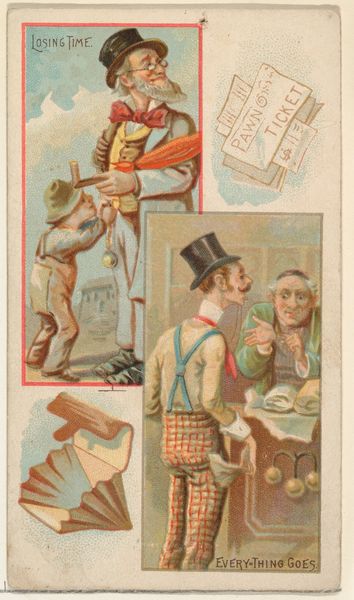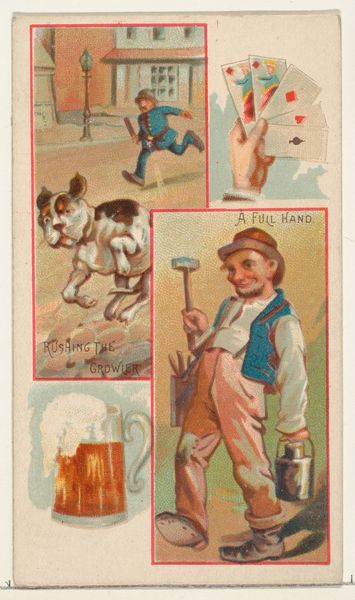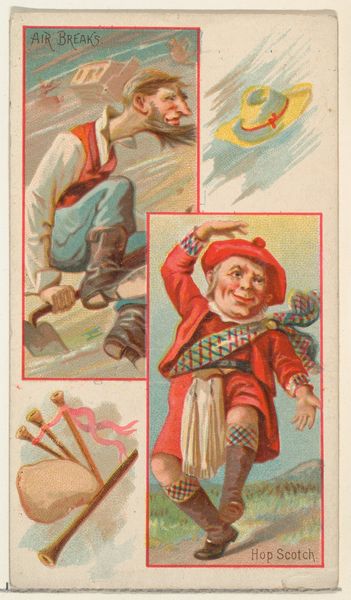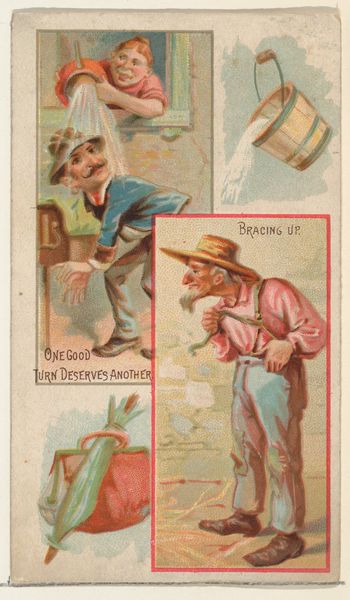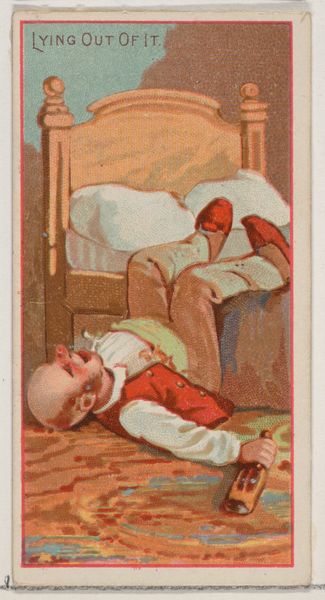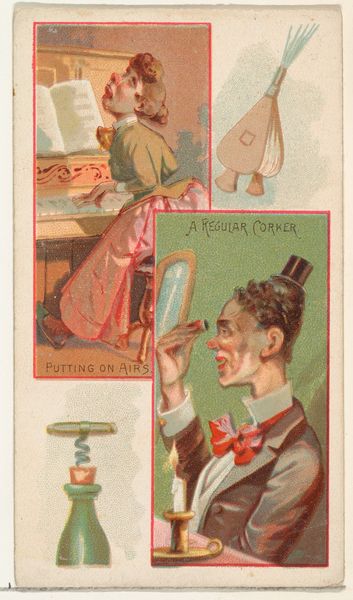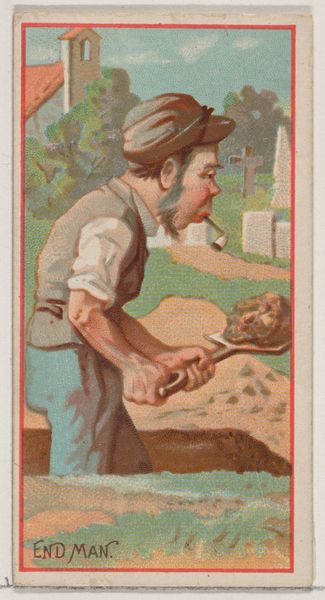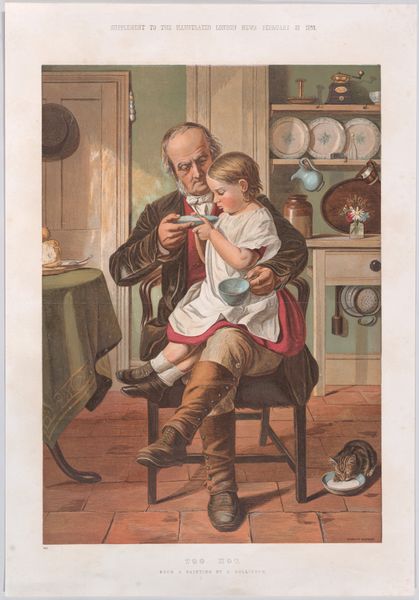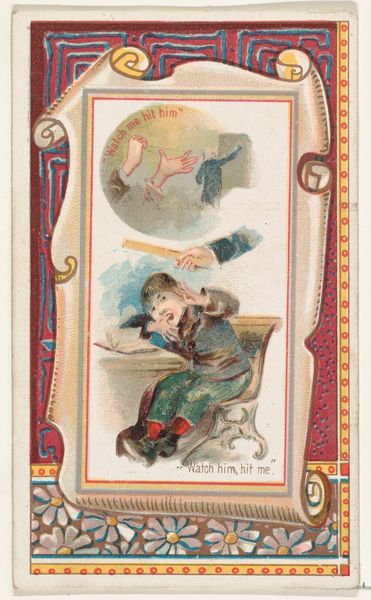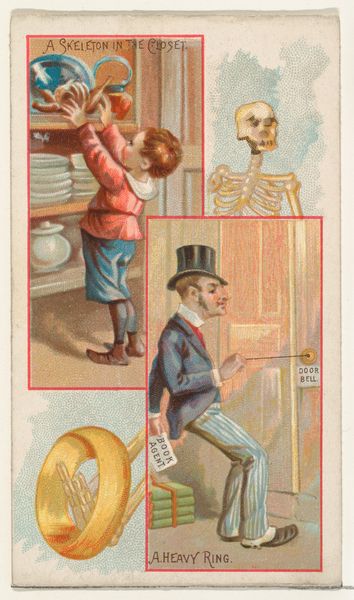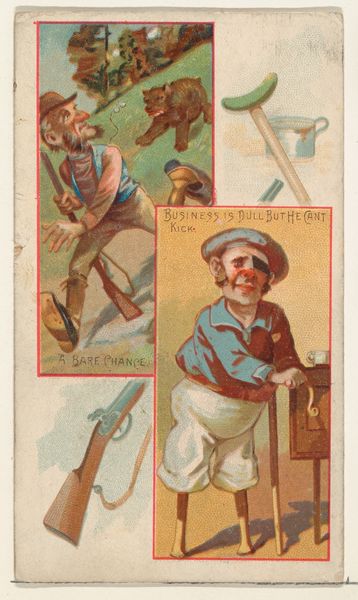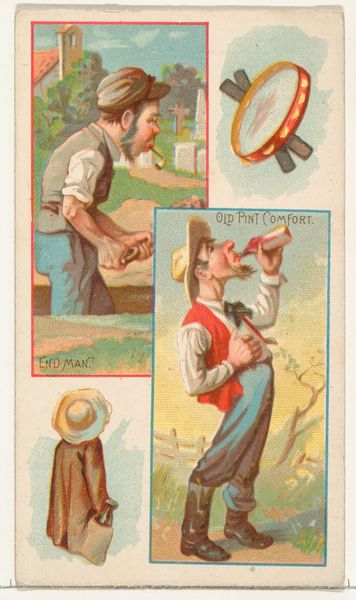
Lying Out of It / A Boxer, from the Jokes series (N118) issued by Duke Sons & Co. to promote Honest Long Cut Tobacco 1890 - 1893
0:00
0:00
Dimensions: Sheet: 4 1/4 × 2 7/16 in. (10.8 × 6.2 cm)
Copyright: Public Domain
Curator: This print, dating from between 1890 and 1893, is titled “Lying Out of It/A Boxer.” It comes from the Jokes series issued by Duke Sons & Co. to promote Honest Long Cut Tobacco. Editor: My first impression is how strikingly it depicts the juxtaposition of success and ruin; almost a darkly comedic portrayal of ambition and its potential pitfalls. Curator: Exactly. Duke Sons & Co. often utilized caricatures like this to tap into a broader audience. Think about the public role of art, even advertising art like this. The humor would’ve been immediately relatable and, perhaps, served as a cautionary tale, subtly suggesting the benefits of Honest Long Cut. Editor: And we can analyze the semiotics embedded here; beyond simple advertising. There's a boxer, perhaps at the peak of his career with the gloves. In stark contrast to the boxer passed out by his bed after a night of excesses, rendered, presumably, prostrate. The arrangement invites viewers to interrogate identity—specifically masculine identity—and its precarious nature within the socio-political landscape of the time. Curator: The placement of the bedchamber vignette adjacent to the clean-cut working man adds layers to the social commentary. One panel implies wealth or fame acquired, followed by dissolute living, while the second portrays labor, temperance, industry and all that early American ideology valued. It's a very shrewd campaign. Editor: The narrative here extends beyond the purely visual. By combining humor with morality, they create a piece that prompts a broader conversation about the intersection of class, success, and personal responsibility. Are they implicating all boxers or a social stratum? Curator: I think that, within the context of the late 19th century's fascination with physical culture and moral reform movements, it makes us consider these commercial images critically and the intended societal effect from big corporations, whether positive or negative. Editor: Yes, definitely, it reveals an anxiety and discourse on self-governance, and its effectiveness among different social strata. Seeing these tensions makes engaging with art an active exploration. Curator: I agree; looking closer reveals much about that historical context, it gives more dimensions. Editor: A great find to ponder then.
Comments
No comments
Be the first to comment and join the conversation on the ultimate creative platform.
